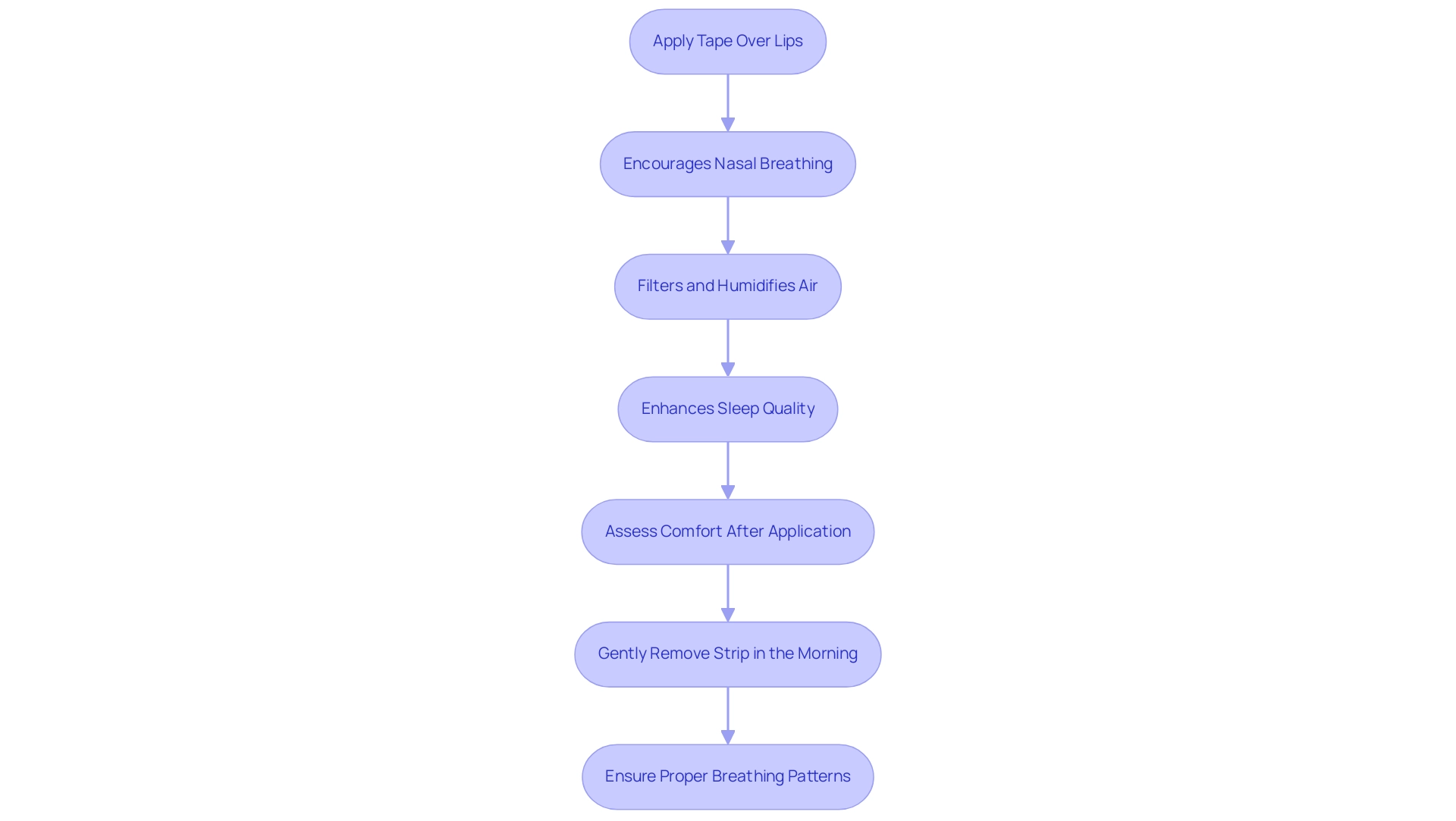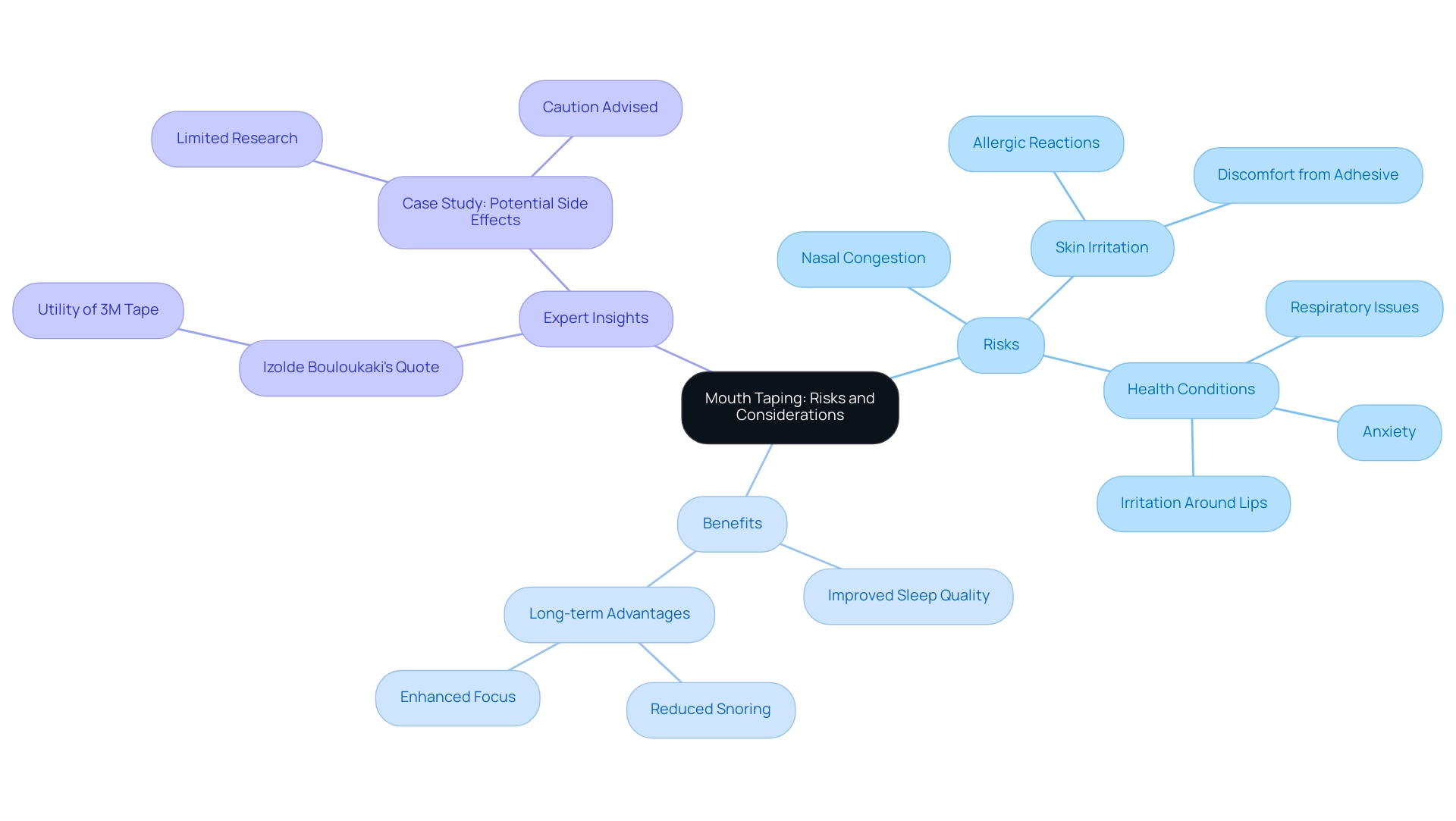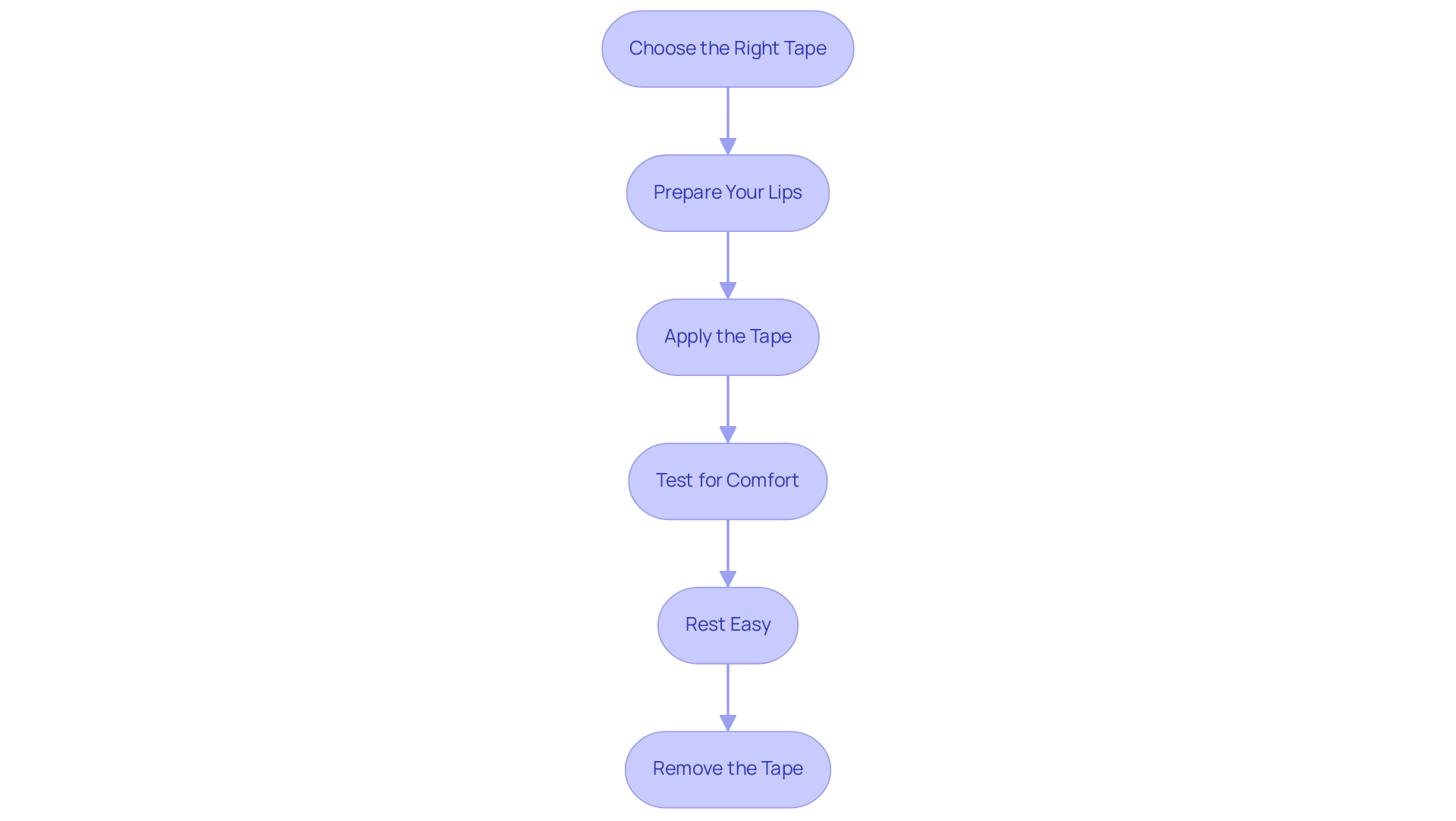Mouth Taping for a Stuffy Nose: A Caring Step-by-Step Guide
Overview
Introduction
- The mechanics of mouth taping
- Its benefits for those struggling with nasal congestion
- Necessary precautions to take
- Practical guidance for anyone looking to enhance their nightly rest
1. Understanding Mouth Taping: What It Is and How It Works
Lip sealing is a simple yet effective method that involves placing a gentle adhesive tape over the lips before sleep, ensuring they remain closed throughout the night. This practice, known as mouth taping, encourages breathing through the nose, which can be especially beneficial for those who often breathe through their mouths, particularly during times of congestion. By promoting nasal breathing, lip sealing helps filter and humidify the air entering the lungs, alleviating discomfort associated with a stuffy nose.
The tape used for this purpose is typically hypoallergenic and designed to be kind to the skin, ensuring maximum comfort during use. This is crucial, as a pleasant experience increases the likelihood of regular nightly use, which is essential for reaping the full benefits of mouth taping. Many users have shared transformative experiences, with testimonials such as, 'I never knew how much better I could rest until I tried these!'
Research indicates that oral adhesive strips can significantly enhance sleep quality by reducing snoring and fostering deeper, more restorative slumber. This is particularly important, as good sleep hygiene practices—like maintaining a consistent sleep schedule and creating a restful environment—are vital for overall well-being. Experts suggest that mouth taping can be an effective approach to addressing nasal congestion, making it a valuable tool for those seeking relief.
To maximize the benefits of oral adhesive strips, consider following these simple guidelines:
-
Assess comfort after application.
-
Gently remove the strip in the morning.
-
Ensure proper breathing patterns during use.
These practices not only enhance the effectiveness of mouth taping but also minimize any potential discomfort, ensuring a safe and beneficial experience for users. With a commitment to customer satisfaction reflected in many positive reviews and a convenient return policy, Awesome Mouth Tape stands out as a trustworthy option for those looking to improve their sleep quality through effective breathing.
Customers can try the product risk-free for 30 days, highlighting the company's confidence in its effectiveness. Plus, with an affordable 6-pack offer starting at just $19.99, Awesome Mouth Tape offers an innovative and clinically proven solution for snoring relief, transforming your sleep experience and nurturing relationship health.

2. The Benefits of Mouth Taping for Nasal Congestion

3. Safety First: Risks and Considerations of Mouth Taping
While mouth taping over a stuffy nose can significantly enhance your quality of rest, it’s essential to remain mindful of the possible hazards associated with its use. If you’re dealing with considerable nasal congestion, sleep apnea, or other respiratory concerns, we encourage you to consult a healthcare expert before trying mouth taping. This precaution is vital, as it may worsen any existing breathing difficulties.
Reports have shown that some users experience skin irritation or allergic reactions to the adhesive. This highlights the importance of choosing tape specifically designed for skin contact and labeled as hypoallergenic. In 2025, statistics revealed that a notable number of users reported discomfort related to facial covering, which emphasizes the need for caution in this practice. If you find yourself feeling uncomfortable or having trouble breathing during the night, it’s crucial to remove the tape immediately to avoid any adverse effects.
Anecdotal evidence suggests that while lip covering is generally safe, those with certain health conditions may face increased risks, such as anxiety or irritation around the lips. A case study titled 'Potential Side Effects of Oral Sealing' indicates that while oral sealing is typically regarded as safe, it’s wise to exercise caution due to reports of discomfort and irritation.
Healthcare professionals stress the importance of being aware of these safety considerations, especially for individuals with respiratory issues. For instance, a recent study pointed out that while mouth taping can alleviate symptoms of obstructive sleep apnea (OSA) in specific patients, it isn’t universally suitable for everyone. As noted by Izolde Bouloukaki, an Academic Editor, "Our study highlights the utility of 3M tape as an easy and inexpensive tool to mitigate the severity of OSA in selective patients."
Being informed about potential risks and ensuring that the tape you use for mouth taping is appropriate can help foster a safe and effective experience.
Many users of Awesome Mouth Tape report improvements in sleep quality and energy within just 3-7 nights, with long-term benefits like reduced snoring and enhanced focus developing over 2-4 weeks of consistent use. Moreover, news articles have highlighted the effectiveness of oral sealing in minimizing air escape during bilevel ventilation, further showcasing the advantages of this practice. Plus, customers can try the product risk-free for 30 days, reflecting the company’s confidence in its safety and effectiveness.
We know how challenging this journey can be, and you’re not alone. Taking these precautions can help you make an informed decision that supports your well-being.

4. How to Use Mouth Tape: A Step-by-Step Guide
- Choose the Right Tape: We recommend Awesome Mouth Tape, a hypoallergenic, skin-safe tape specifically designed for mouth taping. It's important to avoid harsh adhesives like duct tape, as they can cause irritation.
- Prepare Your Lips: Clean and dry your lips thoroughly. This preparation enhances the tape's adherence and minimizes the risk of discomfort.
- Apply the Tape: Cut a piece of Awesome Mouth Tape that comfortably covers your lips. Gently place it over your closed lips, ensuring it is secure yet not overly tight to allow for natural movement.
- Test for Comfort: Before settling in for the night, take a moment to ensure you can breathe easily through your nose. If you experience any discomfort, please remove the tape immediately to avoid any issues during sleep.
- Rest Easy: Once you feel at ease, proceed to rest as usual. The tape should remain in position all night, encouraging breathing through the nose and possibly decreasing snoring. According to a study by H.-Y.L., oral adhesive strips can serve as an effective treatment option for mild obstructive apnea (OSA) patients, providing a simple alternative before considering CPAP therapy or surgery.
- Remove the Tape: In the morning, carefully peel off the tape. If you notice any irritation, consider using an alternative kind of tape or seek guidance from a healthcare professional.

5. Alternatives to Mouth Taping: Other Solutions for Better Breathing
-
Nasal Strips: These adhesive strips are applied to the outside of the nose, physically opening the nostrils to increase airflow during sleep. Studies indicate that breathing strips can significantly enhance respiratory efficiency, particularly for those with mild congestion. Many users find these strips to be a popular alternative to mouth taping, providing immediate relief for stuffy noses.
-
Humidifiers: Utilizing a humidifier in your bedroom can maintain moisture in the air, alleviating congestion and facilitating easier breathing. This is especially beneficial in dry climates or during winter months when indoor air tends to be drier.
-
Saline Sprays: These sprays assist in moisturizing passages and clearing mucus, making it easier to breathe. Regular use can lead to noticeable improvements in nasal airflow, especially for individuals suffering from allergies or colds.
-
Oral Appliances: Dental devices designed to keep the airway open can be effective for those with apnea or chronic snoring. These devices work by adjusting the jaw and tongue to prevent airway obstruction during rest. Proven treatments for apnea include these oral devices, which can serve as a viable alternative for those seeking solutions.
-
Positional Therapy: Sleeping on your side rather than your back can significantly reduce snoring and enhance airflow. Rest experts often suggest this simple yet effective strategy for improving the quality of your rest.
-
Breathing Exercises: Techniques such as diaphragmatic breathing or alternate nostril breathing can enhance airflow and decrease congestion. Incorporating these exercises into your daily routine can lead to long-term benefits for your respiratory health.

Conclusion
Mouth taping offers a thoughtful solution for those looking to enhance their sleep quality through improved nasal breathing. By gently applying a hypoallergenic tape over the lips, you can encourage nasal breathing. This not only alleviates discomfort from nasal congestion but also significantly reduces snoring. Many individuals have shared their positive experiences, and research supports that mouth taping can lead to deeper, more restorative sleep, ultimately boosting overall well-being.
However, we know how important it is to approach mouth taping with care. While many have found transformative results, it’s crucial for individuals with severe nasal congestion or respiratory conditions to consult a healthcare professional before trying this method. Understanding potential risks, such as skin irritation and breathing difficulties, is essential for ensuring a safe and effective experience. By following recommended guidelines and taking necessary precautions, you can maximize the benefits while minimizing any adverse effects.
If mouth taping doesn’t seem right for you, don’t worry! There are various alternatives available to promote better breathing and enhance sleep quality. Options like nasal strips, humidifiers, and oral appliances can provide effective relief for nasal congestion and sleep disturbances. Ultimately, whether you choose mouth taping or explore other solutions, the aim remains the same: to achieve a more restful night’s sleep and wake up feeling rejuvenated.
Prioritizing your sleep health is a vital step towards enhancing both your physical and mental well-being. Remember, you’re not alone in this journey; taking care of your sleep can pave the way for a more energetic and fulfilling life.






